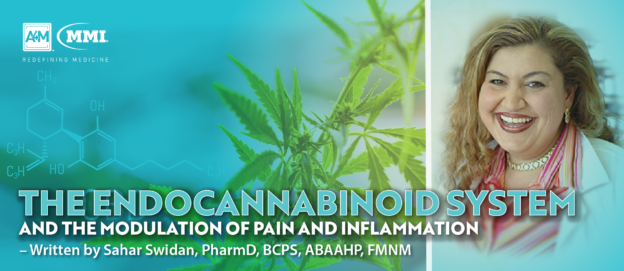As the landscape of longevity medicine continues to evolve, there are very few topics as contested as the role of cannabis-based medicinal products in age-related disease management. While the use of cannabis in younger populations has historically raised concerns about neurocognitive effects, recent evidence suggests that older adults may benefit from its unique pharmacologic profile.
For clinicians working at the intersection of aging, chronic disease, and patient quality of life, the potential applications of cannabis-based medicinal products warrant careful exploration.
The Endocannabinoid System and Aging
Central to cannabis’ therapeutic potential is the endocannabinoid system (ECS). The ECS is a network of receptors, ligands, and enzymes that regulate homeostasis across multiple physiologic systems. Aging is associated with dysregulation of the ECS, including reduced CB1 receptor expression and altered signaling pathways. These changes may contribute to increased vulnerability to inflammation, sleep disturbance, chronic pain, and neuropsychiatric symptoms in older adults.
Cannabinoid compounds such as THC and CBD act on these pathways in distinct ways. Evidence suggests that cannabis may restore some of the regulatory balance lost with age in older adults. This is in contrast to younger populations, where ECS disruption from heavy cannabis use can impair cognitive development and long-term brain health.
For longevity-focused practitioners, this age-dependent response highlights the importance of timing, context, and dosing in therapeutic application.
Clinical Applications in Age-Related Disease
Research on cannabis and aging is still in its early stages, but several domains of potential benefit are emerging:
- Sleep Disorders: Insomnia prevalence rises with age and correlates with poor cardiometabolic outcomes and accelerated cognitive decline. Small-scale trials suggest that cannabinoids may improve sleep latency and quality, potentially serving as adjunctive therapy when traditional pharmacologics are poorly tolerated.
- Neuropsychiatric Symptoms: Anxiety and depression frequently complicate aging trajectories and chronic illness. Preliminary evidence indicates that CBD, in particular, may mitigate these symptoms without the sedative risks associated with benzodiazepines.
- Chronic Pain and Inflammation: Musculoskeletal degeneration, neuropathy, and inflammatory arthritis represent leading drivers of diminished healthspan. CBMPs may reduce pain perception and modulate inflammatory pathways, offering a non-opioid alternative for select patients.
Importantly, these therapeutic opportunities must be weighed against the risk of cognitive impairment, falls, and polypharmacy interactions, particularly in frail or multimorbid patients.
Challenges in Evidence and Clinical Adoption
Despite promising signals, the evidence base remains limited. Most studies are small, heterogeneous, and constrained by inconsistent terminology. Terms such as “recreational use,” “heavy use,” or “older adults” lack clinical precision, making it difficult to translate findings into actionable protocols. Standardized dosing frameworks, age-stratified cohorts, and randomized controlled trials are needed to clarify efficacy and safety.
The lack of trial data presents both a barrier and an opportunity for clinicians. Those who integrate cannabis into practice must do so with an emphasis on personalized risk-benefit assessment and meticulous patient monitoring.
Practical Considerations for Longevity Medicine
Physicians interested in integrating cannabis-based medicinal products into longevity practice should approach cautiously but proactively:
- Patient Selection: Older adults with refractory pain, insomnia, or anxiety who have not responded to standard therapies may represent appropriate candidates for careful cannabis trials.
- Formulation and Delivery: Non-inhaled forms (e.g., capsules, oils, or microdosed preparations) may reduce respiratory risk and improve dose consistency.
- Monitoring: Close tracking of cognition, balance, cardiovascular status, and drug-drug interactions is critical, particularly when patients are on polypharmacy regimens.
By embedding cannabis discussions within a broader framework of patient-centered, longevity-focused care, clinicians can navigate this evolving field responsibly.
Looking Ahead
Cannabis is not a panacea for aging. Yet, in the right patients it may offer meaningful improvements in healthspan by addressing sleep, mood, pain, and inflammation which are core domains of longevity medicine. As research deepens, physicians will need to discern where cannabis fits among other emerging therapies and how to integrate its use into evidence-based protocols.
The future of longevity care depends on leveraging every validated tool at our disposal. Cannabis, once dismissed as fringe, may soon take its place as a legitimate adjunct in the fight against age-related decline.



